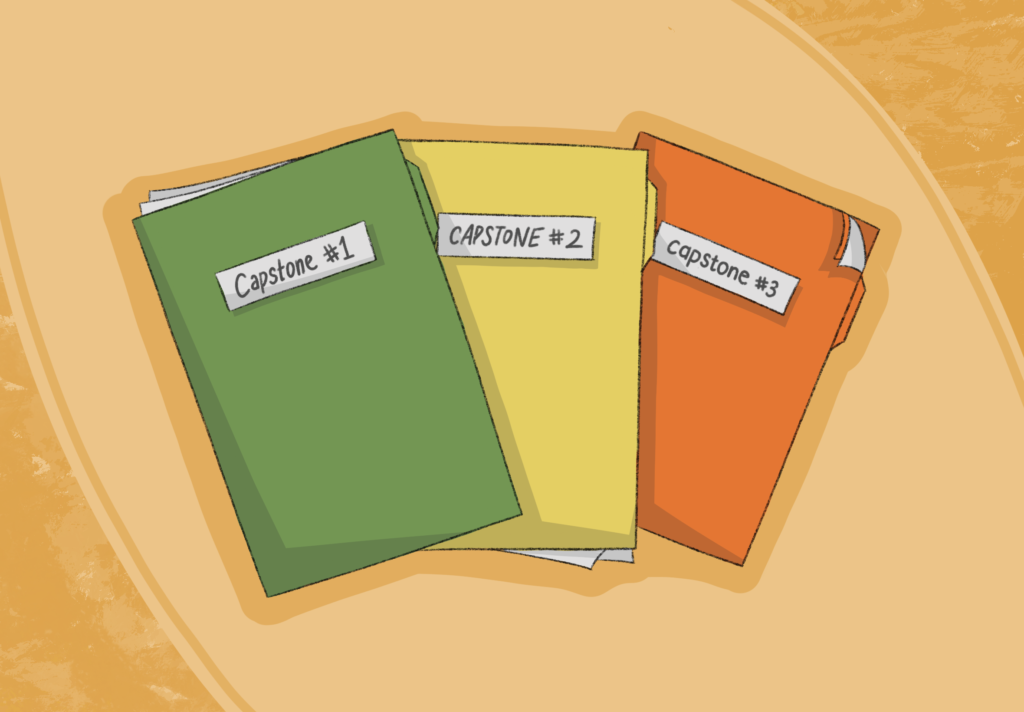
By Adrian Torres ’25
Any student who stumbles upon the wrong classroom by chance may be surprised to hear recitations of ancient Greek text or discussions on the spectroscopic analysis of galaxies. With over 200 courses available at Choate, it’s no wonder that students can dive deeply into their interests regardless of how “niche” they may be.
Astrophysics
Open to students who have completed a year of physics, Astrophysics includes a wide range of topics in the field, from stellar evolution to the origins of the universe.
“I want the students to be in awe of our universe, to see the beauty in it, and also be able to apply some of the math and science that they previously learned to those things,” said Ms. Kimberly Finn Bolster, the instructor of the course.
Students in the class often work together in problem sets and research projects. “I think a big takeaway was collaboration,” Kay Lee ’25 said. “In terms of general engagement, passion, and willingness to come to class, those levels are a lot higher in this class compared to others.”
Another important aspect of the course is the opportunity for students to personalize their learning by choosing topics for their research projects and focusing on what interests them the most. “I’m hoping to develop a robust series of resources that I can call upon to really target where my students are and where they want to go,” said Ms. Finn Bolster.
Independent Theater and Film Workshop
Led by English and Theater teacher Mrs. Kate Doak, Independent Theater and Film Workshop is in its second year as a course. Alternating weekly between individual meetings with Mrs. Doak and group meetings as a class, students in the class have the unique opportunity to complete an independent project, whether it be a short film or a dramatic play. This specialized structure offers a constructive environment for students to delve deep into their craft while learning from one another.
Having that time to work by yourself, get feedback from an adult, and then get feedback with everyone — you can’t really get that anywhere else,” said Grace Walters ’24, who is working on a full-length screenplay. She also said reading her work aloud and receiving feedback from peers has been helpful “after spending so much time just writing by yourself and having all this just in your head and on the page.”
Bouncing ideas off of one another is crucial to the creative process of any theatrical production, from ideation to final presentation. Mrs. Doak said, “They show up for each other outside of the classroom on these projects, which is part of the goal.”
Max Leventon ’25, who is writing the beginning episodes of a TV show, agreed. “What I’ve found is that when people come into the class, they come in because they want to write, and they want to learn. They’re showing up not because they have to, but because they want to,” he said.
Classical Greek
Over the course of the school year, students in the Classical Greek intensive course build their foundation with the alphabet and grammar of the language. The course culminates in translating and memorizing The Odyssey, in addition to a potential School Meeting performance with students reading or singing the beginning of the epic.
“It’s just incredible to me to be able to actually read some of the primary documents and stories that were told back then,” said John Reach ’24, a student in the class.
As a companion language to Latin, many upper-division Latin students chose to take Greek to advance their study of the classics. “I’ve been taking Latin since I started freshman year, and then I was given the opportunity to switch to Greek, and I just thought, ‘Why not?’” Celia Glover ’24 said.
“There’s no one here that didn’t want to sign up for the class, so it’s a really dynamic and engaging environment,” instructor Dr. Scott Davis said. “It’s a more fun class for me to show up to because I know that there’s going to be a lot of good engagement from the students.”
Dance and Social Justice
Every other winter, students explore the historical connection between equity and the arts in the Dance and Social Justice course. Finding its roots in a directed study, this class expands on material taught in the Dance History class and made its debut in the course curriculum last year.
In the class, students learn about artists who have connected with communities through dance and brought attention to issues like women’s rights and the judicial system.
“My feeling is for students to see the broad reach of dance. That it’s not just a form of entertainment or a diversion, but it’s an active communicative tool for social change,” said Dance Program Head Ms. Pamela Newell, who teaches the class. “You do not have to be a trained dancer at all. It’s really for someone interested in social justice and the arts and the reach of the arts as a vehicle for communication.”
After watching various examples of social activism through dance, students create their own studies and collaborate to choreograph a performative work as a culminating project.
“It was just a great experience, seeing how they view dance in a different way than I did,” Rodrigo Chon Him ’25, a student who took the class, said. “I don’t think I would have gotten the same experience in other classes … we went over topics that really stood out to me that caught my interest.”
Ms. Newell appreciated the students’ contributions to the course. “I feel like [the class] was engaged and [had] spirited, great conversations. And sometimes, it surprised me the things that they connected to,” she said.
Monetary Theory
Created in 2004 to help students prepare for the Fed Challenge — a former competition hosted by the Federal Reserve (the Fed) challenging high school students to formulate monetary policy recommendations — Monetary Theory teaches students about the theory and practice of monetary policy and its effects on the economy. Through analyzing current economic data, press releases, and speeches from the Fed, students can learn to understand the Fed’s role and policymakers’ evaluations of the economy.
Instructor Mr. Ted Hartsoe said he hopes that through the class, students learn about the Fed, financial markets, and how they are connected to and impact the economy.
Seen as the most challenging course in the School’s economics program, enrollment for the course is selective and limited to a single section consisting of 12 students with the strongest interest. The course is only held once per year during the winter term.
Throughout the course, students compose essays with their recommendations for the Fed about the current economy, host a mock Federal Market Open Committee (FOMC) meeting to discuss the Fed’s policy, and conduct formal presentations to explain an aspect of monetary policy or the structure and functioning of the Fed. The culminating project involves a group presentation about banking regulation policies, where students give their monetary and banking regulation policy recommendations to a scenario.
Next time you’re perusing the course catalogue for electives to take, consider that special title that catches your eye. In taking one of Choate’s niche classes, you might just find yourself a new favorite subject.




